2014 Jeep Cherokee Versus 2014 Nissan Rogue

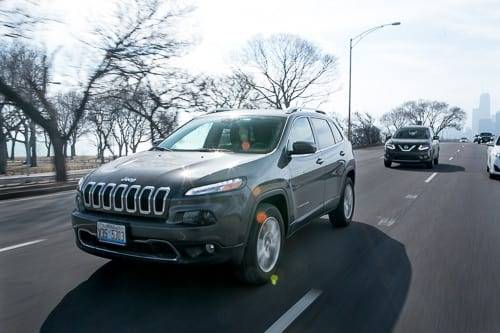
Sporting a 1-0 record, the Cars.com long-term 2014 Jeep Cherokee headed into its next head-to-head comparison against the redesigned 2014 Nissan Rogue. The Rogue makes for a much more suitable comparison with the Cherokee, which dominated the outdated 2014 Jeep Compass.
2014 Nissan Rogue Expert Review
The new Rogue should look familiar by now due to relentless TV commercials placing the Rogue in urban environments, jumping on top of trains and blasting through evil snowmen. It’s the same type of urban cityscape editors Joe Wiesenfelder and Joe Bruzek used to test the Rogue head-to-head with the Cherokee on the post-winter, heavily pothole-ridden streets of Chicago.
The Cherokee Limited’s price of $33,375 with destination and options cost just $980 more than the similarly equipped Rogue SL’s $32,395 as-tested price. Each used four-cylinder engines and had navigation, leather, all-wheel drive and seating for five. On the outside, the Rogue and Cherokee have similar footprints, separated by less than an inch in length, width and height. On the inside, though, the Rogue’s space efficiency is noticeable in more passenger and cargo volume. Compare specifications of both here.
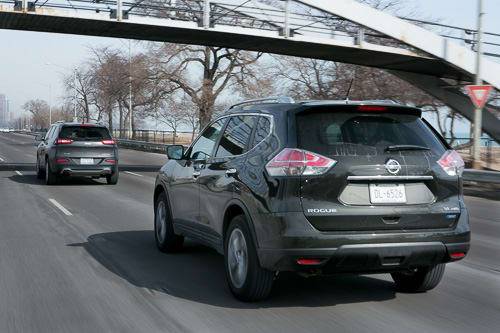
Acceleration
Winner: Rogue
With a four-cylinder, the Cherokee is definitely acceleration-challenged, and the nine-speed transmission’s conservative calibration doesn’t make the most of what’s there, especially off the line where you feel it most. The Rogue has 14 horsepower less, but it’s lighter by 439 pounds. It also has more torque at lower rpm and a continuously variable automatic transmission that does a surprisingly good job of exploiting it.
Braking
Winner: Rogue
Both of these cars had good stopping power and good braking linearity overall, though the Cherokee is a bit grabby on initial application. There’s no great difference, otherwise.
Handling
Winner: Rogue
The Cherokee exhibits composed dynamics, but it’s a bit nose-heavy and the transmission doesn’t like to power into corners; it always seems to have another agenda. (We think the Cherokee’s Sport mode revs the engine into uncomfortably high rpm before shifting and is more awkward than it’s worth.) The Rogue is more predictable in this regard and has notably better front/rear weight balance. The steering feel is good, too, which helps make the Rogue into an entertaining small SUV to drive, or at least more so than the Cherokee.
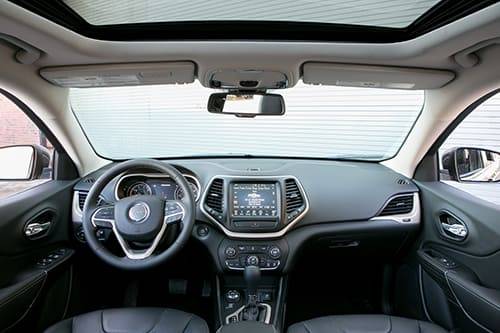
Noise
Winner: Cherokee
The Cherokee (above) is a quiet model for this class. The only thing that bugged us is the faint engine clatter at idle; it’s not as loud as in the old Compass and Patriot, but you can hear it when walking up after using the factory remote start; the idle occasionally makes itself known in the cabin, as well. Under acceleration, the engine sound is clearly audible on the inside but is not as objectionable. The Rogue had a good deal more road noise than the Cherokee, which proved a more constant annoyance. The Cherokee’s driving experience is isolated from outside wind and road noises at highway speeds as well as from tire thwacks after hitting unavoidable potholes.
Ride
Winner: Cherokee
Ride quality is one of the Cherokee’s strongest attributes — comfortable without being too isolating. The Rogue clearly has a sophisticated, well-designed suspension, but the ride is firmer and felt a bit busy over decimated post-winter Chicago pavement.
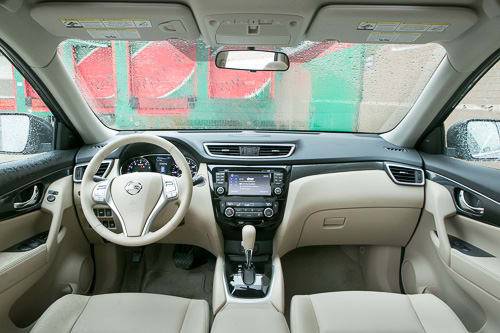
Interior Quality
Winner: Rogue
Considering that neither of these models is from luxury brands, they raise the bar on interior quality. Wiesenfelder marked the Rogue (above) down slightly, mainly because it uses more unconvincing faux-metal trim than he wanted to see, especially in a fresh redesign. Bruzek especially liked the Rogue’s luxurious light-colored interior compared with the Cherokee’s dark and tech-filled one, though it doesn’t take much time to cover the Rogue’s tan interior in dirt.
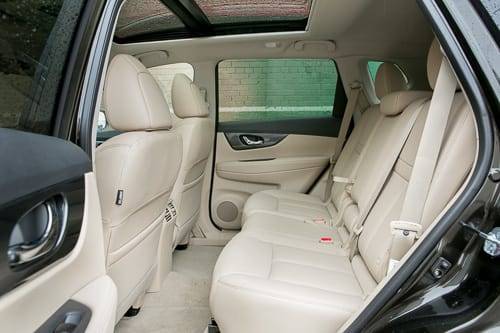
Seats
Winner: Rogue
The Rogue’s front seats aren’t as wide and comfortable as the Cherokee’s, but they’re OK, and its backseat (above) offers both ample legroom and adequate headroom. The Cherokee’s backseat legroom spec is better by almost 2.4 inches, but Wiesenfelder said his experience suggests the opposite, even with the adjustable backseat slid back fully. Also, at 6 feet tall, Wiesenfelder said his head was in contact with the ceiling alongside the panoramic moonroof. The Rogue had a panoramic roof, too, and neither editor had headroom complaints there.
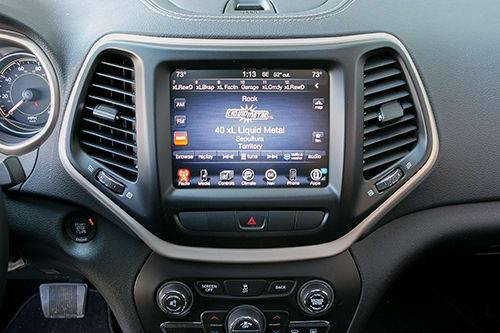
Multimedia
Winner: Cherokee
In the case of multimedia integration, between these two SUVs, size matters: The Cherokee’s plus-size, 8.4-inch touch-screen (above) integrates climate, navigation and music player functions easily with large virtual buttons and easy-to-read text. The Rogue’s 7-inch display with navigation is also easy to use but has fewer features. One big plus is the Rogue SL trim level’s standard Around View Monitor; it’s impressive, especially in this class, but its effectiveness suffers due to the smaller display.
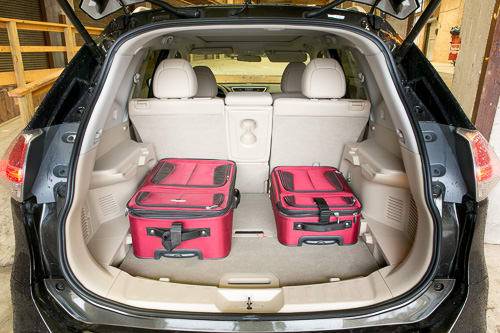
Cargo
Winner: Rogue
The Rogue’s cargo space (above) is very generous for this class, and clearly beats the Cherokee with 70 cubic feet of maximum cargo volume compared with the Cherokee’s 54.9 cubic feet. It’s both higher and wider, and its cargo management provisions also edge out the Jeep’s. The Cherokee has a conventional retractable shade cargo cover that can be stored in one of the nice underfloor compartments. The modular rail system on the left flank supports grocery bag hooks, but we’re still skeptical how it will work with any of the other accessories Jeep offers. The Rogue’s rigid floor/shelf panels, the use of which has a surprisingly shallow learning curve, translate to a lower overall floor in one configuration and multilevel storage versatility in others. They can create a nice cargo corral in the back and fail in only one regard: providing a complete cargo-area cover like the Cherokee offers.
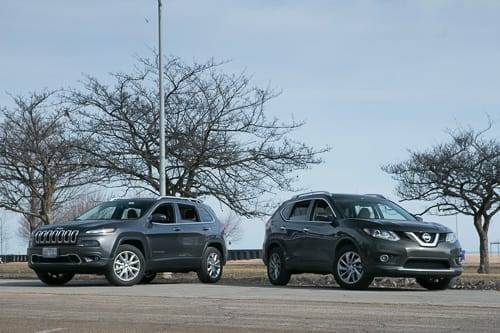
Results
The Rogue may have edged out the Cherokee six categories to three, but it came down to only a slight advantage in most cases. Not in cargo, however, where the Rogue’s size for the money is a big advantage compared with the Cherokee. That’s in addition to the Rogue matching many of the Cherokee’s features — and adding a power liftgate — with a lower MSRP.
Cars.com photos by Evan Sears
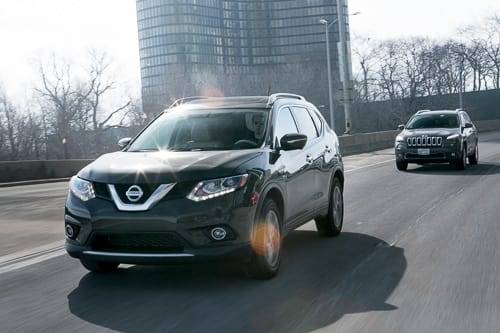

Managing Editor Joe Bruzek’s 22 years of automotive experience doesn’t count the lifelong obsession that started as a kid admiring his dad’s 1964 Chevrolet Corvette — and continues to this day. Joe’s been an automotive journalist with Cars.com for 16 years, writing shopper-focused car reviews, news and research content. As Managing Editor, one of his favorite areas of focus is helping shoppers understand electric cars and how to determine whether going electric is right for them. In his free time, Joe maintains a love-hate relationship with his 1998 Pontiac Firebird Trans Am that he wishes would fix itself. LinkedIn: https://www.linkedin.com/in/joe-bruzek-2699b41b/
Featured stories
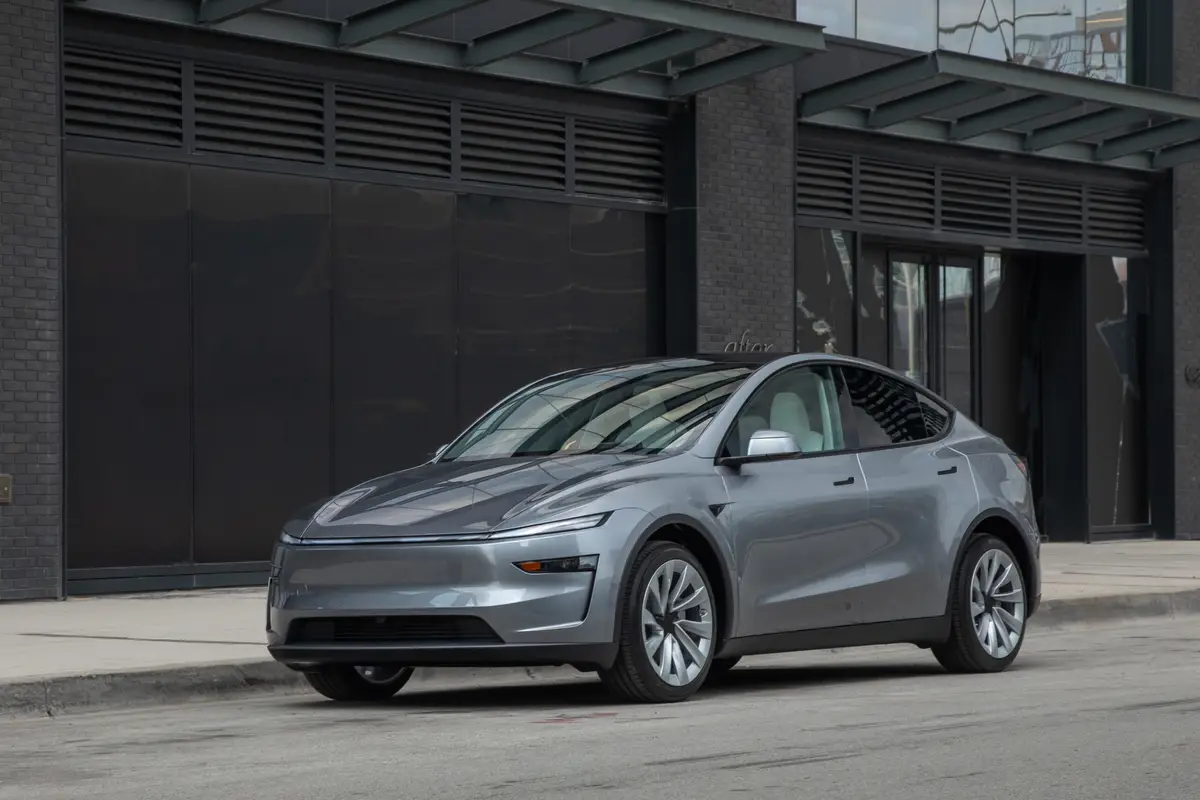
Should Tesla Model Y Owners Get the New 2026?

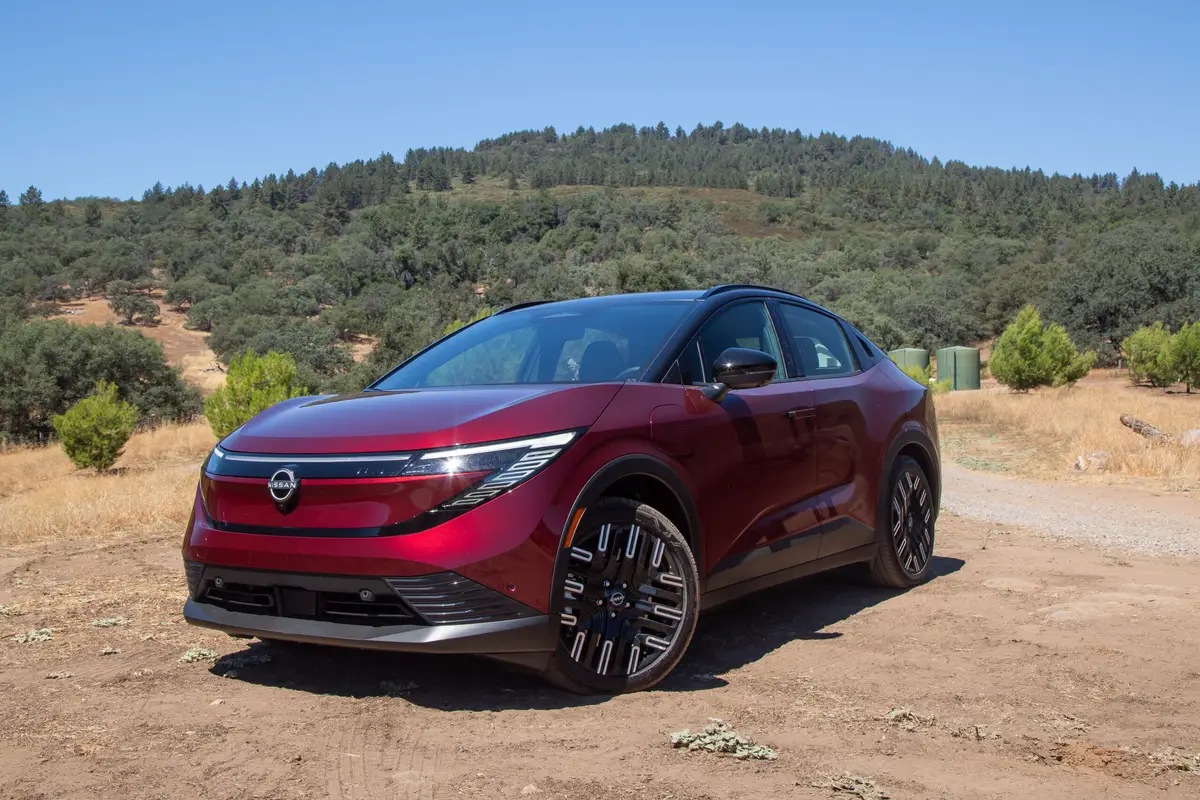
2026 Nissan Leaf Review: Value Victory


